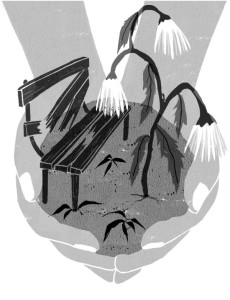Here is a recent editorial by Daniel Squadron. He will be giving a press conference at 12:30 pm on Sunday, 6/2, in Sara D. Roosevelt Park on the south side of Delancey Street.
http://www.nytimes.com/2013/05/25/opinion/can-a-tree-grow-in-brooklyn.html?_r=0
Can a Tree Grow in the Bronx?
By DANIEL L. SQUADRON
LAST week the Central Park Conservancy, the nonprofit group that manages Central Park, announced a $40 million fund-raising campaign to improve the park’s playgrounds, an initiative that will surely benefit thousands of children who play in the park.
The money shouldn’t be a problem: the conservancy has some of the wealthiest patrons in the city. But what about the countless city parks that don’t benefit from private fund-raising?
What about the kids who depend on St. Mary’s Park, in the Mott Haven section of the South Bronx, where the baseball bleachers don’t have seats and the cracked tennis court has no net? Or what about the thousands of people who depend on Flushing Meadows-Corona Park, in Queens, the former home of the World’s Fair, now marred by graffiti, broken drainage and pervasive litter?
In a city as dense and expensive as New York, parks are not a luxury or an amenity; they are our backyards, our oxygen. The marquee jewels in the system — like Central Park and Prospect Park — are extraordinarily well maintained. But the city provides only 15 percent of Central Park’s $45.8 million annual budget, and only about 65 percent of Prospect Park’s $12.3 million budget. Instead, they have large conservancies, which generate high-profile marketing campaigns, star-studded galas and some very big donors.
Of course, the private support these parks receive is laudable and meaningful. But when the billionaire hedge-fund manager John A. Paulson gives $100 million to further polish one of those jewels, it invites a question: where is the political will, and the money, for the millions of New Yorkers who depend on the 1,700 other parks, playgrounds and recreational facilities managed by the city?
The parks that find it hardest to attract support are in communities that need the open space most. About 15 percent of city parks are rated “not acceptable” by the city’s own management report.

When the advocacy group New Yorkers for Parks recently rated parks across the city, it was all too easy to predict which parks would be plagued by broken asphalt, damaged playgrounds and litter-strewn dirt — predominantly, those in neighborhoods without the private resources to maintain them.
How can we level the playing field and help ensure that every neighborhood gets the parks it so desperately needs?
One solution is to provide more financing for parks in the annual city and state budgets.
This can and should be done, but it should be supplemented by an ambitious new program: the creation of a Neighborhood Parks Alliance, which would form partnerships between a well-financed conservancy, a “contributing park” and “member parks” in need of more money and support.
A contributing park would commit 20 percent of its conservancy’s budget to member parks with which it is partnered. A park in need would become a member park by gathering signatures from local residents, establishing its own conservancy group and receiving a city commitment, from the Parks Department and local council members, to maintain current government financing levels.
In addition to money, the “contributing park” conservancies would provide continuing oversight, expertise and programmatic support.
Consider that the Central Park Conservancy has an annual budget for park expenses of nearly $40 million. Twenty percent of that — $8 million — would go a long way for a whole lot of smaller parks.
This is not a comprehensive solution to the problem of open-space equity. A Neighborhood Parks Alliance would not replace city financing, or the need for more of it. Nor would it create 1,700 Central Parks across every neighborhood in the city.
But it would mean that more parks could meet their community’s needs, thanks to groups that have resources and knowledge worth sharing.
Of course, there is no guarantee that the well-financed groups, or their supporters, would welcome the opportunity to support smaller parks. But the conservancies would still be the best way for donors to support their park of choice.
And perhaps, the knowledge that their expertise and dollars had a positive impact beyond their own backyards would inspire some to even greater generosity.
New playgrounds in Central Park are good. New playgrounds in Central Park and newly functioning parks in the South Bronx and beyond are even better.
A Neighborhood Parks Alliance is one simple way for more New Yorkers to have decent open space, so that more families, in more communities, can make a life in the city. Like good schools and safe streets, decent parks must not be reserved for those who can most afford them.
Daniel L. Squadron is a Democratic state senator who represents parts of Brooklyn and Manhattan.
